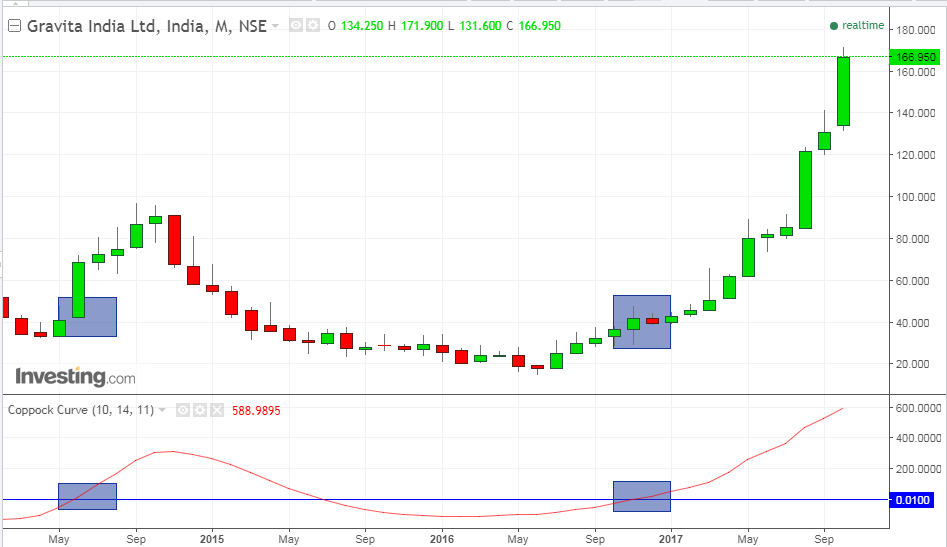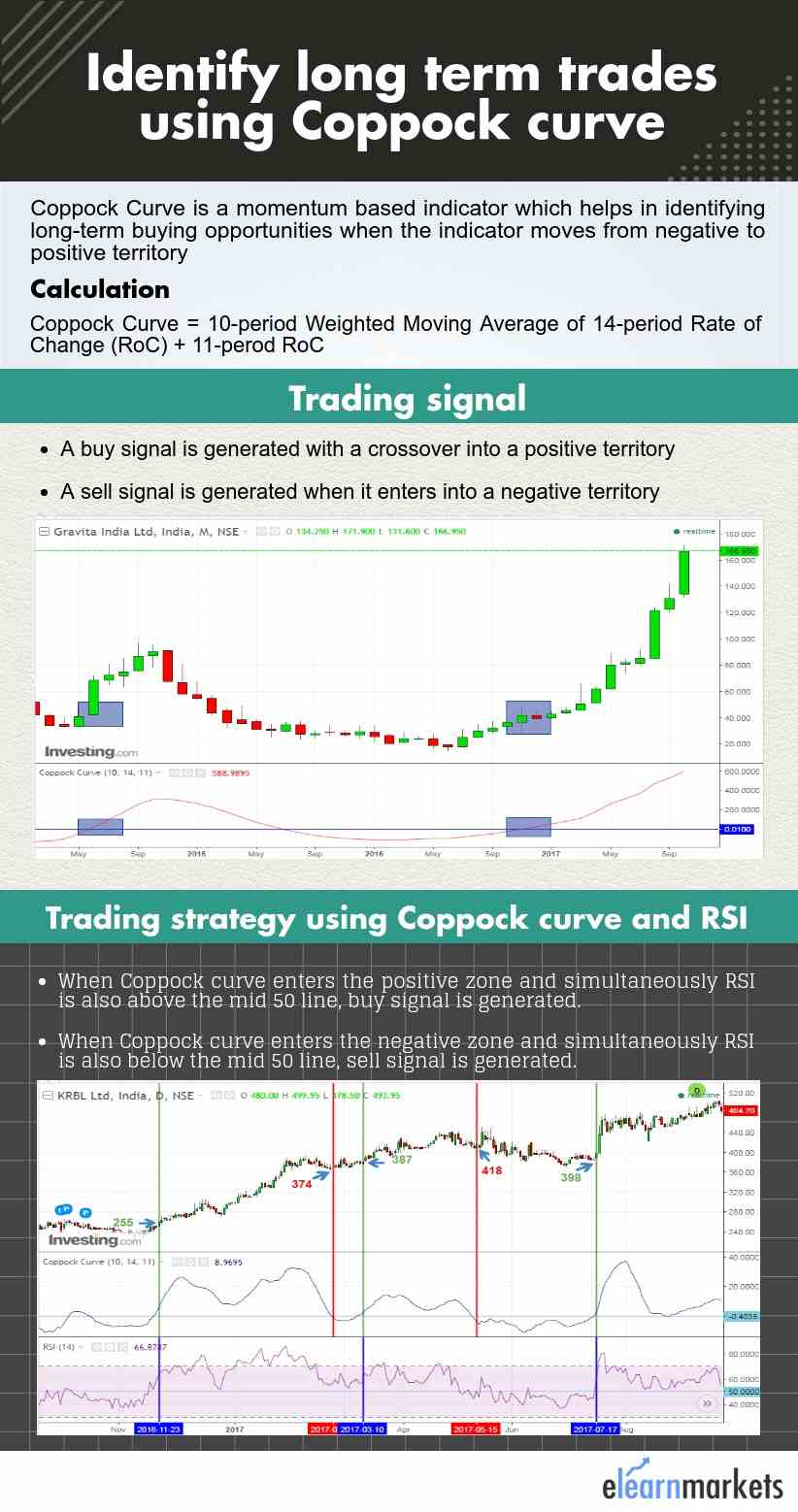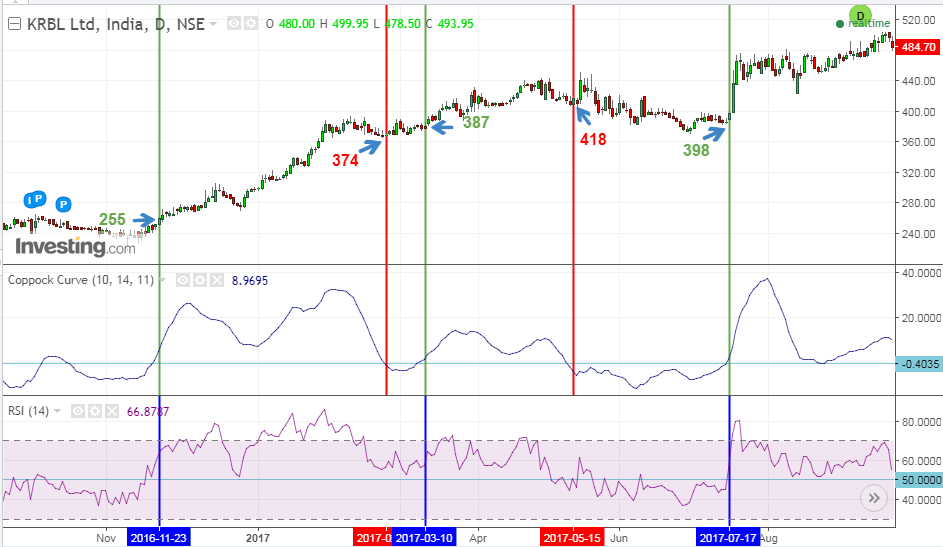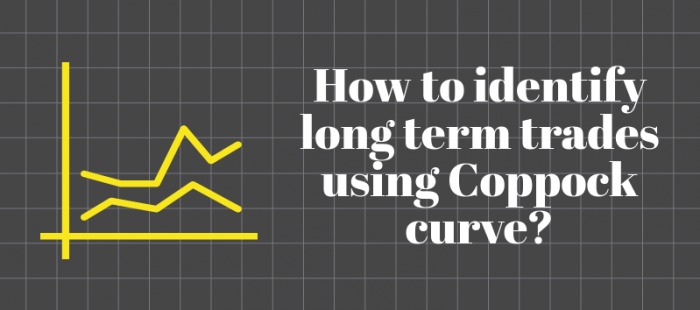The Coppock Curve is a momentum based indicator invented by Edwin Coppock in the year 1965.
The signals generated by this curve are actually very simple and helps in identifying long-term buying opportunities when the indicator moves from negative to positive territory.
Though Edwin Coppock used this to generate buy signals only, however other analysts also use it as a sell signal when there is a cross from positive to negative zone.
Calculation of Coppock Curve
Coppock Curve = 10-period WMA of 14-period RoC + 11-perod RoC
where,
WMA = Weighted moving average
RoC = Rate-of-Change
Also Read: 5, 30 Moving Average crossover strategy using ROC
Trading Signals
In the monthly chart, you will not get many signals using Coppock curve but these limited signals are very strong either way.
There is a center zero line and above which there is a positive territory and below which is seen as a negative area.
A buy signal is generated with a crossover into a positive territory while a sell signal is generated when it enters into a negative territory.
Also read: Mastering Inside bar trading strategy
The chart below is the monthly chart of Gravita India where we can see that whenever the Coppock curve has entered the positive territory.
You can expect a positive price movement in the coming months after it enters the zero line from the negative territory.
After the crossover in the mid of the year 2016, the stock has given more than 400% in the span of almost a year.

Flexibility
The Coppock curve is basically a smoothed momentum oscillator where the momentum is measured by ROC and weighted moving average smoothes the data.
Know More: How to trade using moving average on different timeframes?
It implies that we can use this indicator on different time frame including daily, weekly, monthly and in other time frames too.
Higher the timeframe, lower the whipsaws and better the signal.

Trading strategy using Coppock curve and RSI
The below is the Daily chart of KRBL and as you can see that there are more signals in the daily chart than in the weekly and the monthly chart.
As you can see in the chart that when the Coppock curve enters the positive zone and simultaneously RSI is also above the mid 50 line, it generates a buy signal.
You can exit the trade either using supertrend or else when the Coppock curve enters the negative territory from the positive zone.
You may do NSE Academy Technical Analysis course to learn the various aspect of Technical Analysis and to also learn trading strategies to trade in the real market.
The traders who are unable to devote much time in analysing charts of various securities may benefit from scan section in StockEdge mobile app.
You can watch the video below to know how to use the StockEdge App for tracking the market in a filtered way:
The first time, we took a position in the stock when it was trading at 255 and booked our position at around 374 when the Coppock curve went below the zero line.
The next position we made at 387and made our exit at 418.
We made the final entry in the stock on 17-07-2017 at 398 and now it is trading at 484.7 and the position is still on hold.

Conclusion
The main signal using Coppock curve is generated with positive and negative crossover above and below the center zero line.
Though some aggressive chartist uses Coppock curve to look for positive and negative divergence but these divergences do not always result in trend change.
Initially, this curve was designed for the monthly chart, but you may also use in other time frames as well which suits your trading style.







WONDERFUL Post.thanks for share..extra wait .. …